Occupational Safety Training for Two-String Fiddle (Erhu) Manufacturing
99,000 ₫
Note: The above price is calculated per person and may vary depending on the number of trainees participating in the course and market fluctuations. For more accurate pricing support, please refer to the price list or contact our consultants directly.
Occupational safety is an important issue in dan co (two-string fiddle) manufacturing plants and needs to be addressed promptly to ensure the health and safety of workers and enhance the reputation of businesses. The Occupational Safety Training course is one of the most effective solutions to raise awareness of accident prevention for workers involved in dan co (two-string fiddle) manufacturing.
Table of Contents
Toggle1. Overview of the Vietnamese Two-Stringed Fiddle (Dan Co / Dan Nhi)
a. What is the Dan Co (Dan Nhi)?
The Dan Co (also known as Dan Nhi) is a traditional Vietnamese musical instrument belonging to the string family and originating from China. It is one of the important instruments in traditional orchestras, especially in folk and classical music genres.
Characteristics of the Dan Co:
- Structure:
- The Dan Co resembles a small violin, usually with two strings played with a horsehair bow.
- The body is typically made of wood and shaped like a hollow wooden box, which helps produce the instrument’s distinctive sound.
- Sound and playing technique:
- The Dan Co has a very distinctive sound, with a clear and somewhat mystical tone, thanks to the bowing technique.
- To play, the musician uses the bow to pull the strings, creating the unique sound of the instrument.
- Role in music:
- The Dan Co is often used in folk music, ceremonial music, and traditional Vietnamese classical music.
- It holds a special role in performances of Cheo singing, Cai Luong, and other traditional music styles.
- History and culture:
- The Dan Co has a long history and is closely linked to Vietnamese musical culture. It is not only a performance instrument but also an important part of rituals and cultural events.

b. Machinery used in Dan Co (Dan Nhi) production
- Wood cutting machines:
- CNC cutting machines: Used to cut wood parts precisely according to design. CNC cutting helps minimize errors and ensures consistent processing of parts.
- Table saws: Used to cut wood into required sizes before assembly.
- Drilling and turning machines:
- Drilling machines: Used to drill necessary holes on the instrument body and other parts such as sound holes.
- Turning machines: Used for turning round parts like the neck and other sections of the Dan Co, ensuring even and precise shapes.
- Sanding and polishing machines:
- Sanding machines: Help smooth the wood surface and remove sanding marks after cutting and drilling.
- Polishing machines: Used to create a glossy surface finish, enhancing the beauty and smoothness of the Dan Co.
- String processing machines:
- String pulling machines: Used to pull and adjust string tension, ensuring the Dan Co produces standard sound quality.
- Bow making machines:
- Bow manufacturing machines: Used to make bows, typically made from horsehair or synthetic fibers. These machines can produce bows with precise tension and shape.
- Sound quality testing machines:
- Sound analysis equipment: Used to measure and test the Dan Co’s sound quality, ensuring it meets requirements.
- Painting and surface coating machines:
- Spray painting machines: Used to paint and apply protective coatings on the wood surface of the Dan Co, increasing durability and aesthetics.
- Hand tools and manual processing equipment:
- Saws, knives, and carving tools: These tools are still used in the final production stages for detailed craftsmanship and finishing touches.

c. Famous Dan Co (Dan Nhi) manufacturers
1. Vietnamese Traditional Musical Instrument Makers
- Manufacturers:
- Huu Phuoc Musical Instruments: Specializes in producing traditional Vietnamese instruments, including the Dan Co.
- Thang Long Musical Instruments: Renowned for producing high-quality traditional Vietnamese instruments, supplying the Dan Co.
2. Chinese manufacturers
- Brands:
- Zhonghua Musical Instruments: One of the major brands in China, specializing in various traditional instruments including the Dan Co.
- Beijing Musical Instruments Factory: Supplies the Dan Co and many other traditional instruments with high quality.
3. Japanese manufacturers
- Brands:
- Kawai Musical Instruments: Although more famous for pianos and other instruments, Kawai also produces traditional instruments such as the Dan Co.
4. Indian manufacturers
- Brands:
- Kailash Musical Instruments: Known for producing traditional Indian instruments, including the Dan Co and similar instruments.
5. Korean manufacturers
- Brands:
- Samick Musical Instruments: Specializes in a wide range of traditional and modern instruments, including the Dan Co.
6. Manufacturers from other countries
- Brands:
- Daiichi Instruments (Hong Kong): Provides Dan Co and other traditional instruments, known for quality and fine craftsmanship.

d. Specific jobs in the Dan Co (Dan Nhi) production factory
Group 1
- Executive director, deputy executive director, department heads in the Dan Co (Dan Nhi) production factory.
Group 2
- Safety officers: manage safety in the factory, design safety procedures, supervise and enforce employee compliance with safe working processes.
Group 3
- Wood cutting and turning:
- Cutting machines: Cut wood into necessary parts such as the body and neck of the instrument.
- Turning machines: Turn round parts and components like handles and knobs.
- Drilling and assembly:
- Drilling machines: Drill holes for accessories and other parts of the instrument.
- Assembly: Join parts of the Dan Co together, including attaching strings and the bow.
- Sanding and polishing:
- Sanding machines: Smooth wood surfaces and remove sanding marks.
- Polishing machines: Apply a glossy finish, enhancing beauty and durability.
- Installing strings and bow:
- String installation: Fit strings into respective parts and adjust tension.
- Bow making: Manufacture and attach the bow to the Dan Co.
- Sound testing:
- Use sound analysis equipment to measure and adjust the sound quality of the Dan Co.
- Ensure the instrument produces the correct and standard sound.
- Mechanical quality control:
- Inspect mechanical parts such as joint tightness, string tension, and bow stability.
Group 4
- Office work, service, sales, marketing.
- Production management, quality management, human resource management, material management, financial and accounting management.
- Research and development of new products, designing product packaging and models.
2. Overview of Labor Safety Training Course for Production of Dan Co (Dan Nhi) Instruments
In this article, we focus on issues related to Group 3, because Group 3 directly participates in the production process and faces the highest labor safety risks. For more information on other groups, see here.
a. What is Group 3 Labor Safety Training?
- Group 3 labor safety training consists of sessions that equip workers with awareness on how to prevent workplace accidents.
- The safety training course helps workers recognize and avoid hazards, reducing the risks of workplace accidents during work.
REGISTER FOR LABOR SAFETY TRAINING SERVICE
b. Training Duration
Initial safety training duration
- Total training time is at least 24 hours, including examination time.
- 8 hours of theory on the system of policies and laws on labor safety and hygiene
- 8 hours of theory on basic knowledge about labor safety and hygiene
- 4 hours of theory on specialized training content
- 2 hours of practical training on specialized content
- 2 hours of theory exam at the end of the course
The safety training center will schedule the time into multiple sessions depending on the workers’ availability. Usually, there are 6 sessions over 3 days, provided the manufacturing company arranges continuous study time.
Periodic safety training duration
- Before the labor safety card expires, workers who want to renew must undergo periodic labor safety training with a training time of at least 50% of the initial safety training time.
Explanation: The total time for periodic labor safety training is at least 12 hours, including exam time. After completing the periodic training and passing the exam, workers will be reissued and have their labor safety cards extended.
c. Training Course Content
| No. | TRAINING CONTENT | TRAINING DURATION (HOURS) | |||
| Total | Including | ||||
| Theory | Practice | Examination | |||
| I | System of policies and laws on labor safety and hygiene | 8 | 8 | 0 | 0 |
| 1 | Overview of the legal normative documents system on labor safety and hygiene. | 6 | 6 | ||
| 2 | System of standards and technical regulations on labor safety and hygiene. | 1 | 1 | ||
| 3 | Specific regulations of state management agencies on labor safety and hygiene when constructing, expanding, or renovating facilities for production, use, preservation, storage, and inspection of machines, equipment, materials, and substances requiring strict safety and hygiene controls. | 1 | 1 | ||
| II | Basic knowledge on labor safety and hygiene | 8 | 8 | 0 | 0 |
| 1 | Basic knowledge of hazardous and harmful factors at the workplace. | 4 | 4 | ||
| 2 | Methods to improve working conditions. | 1 | 1 | ||
| 3 | Safety culture in production and business. | 1 | 1 | ||
| 4 | Rights and obligations of employers and employees; labor safety and hygiene policies for employees; functions and duties of safety and hygiene network members. | 1 | 1 | ||
| 5 | Labor safety and hygiene regulations, safety signs, instructions, use of safety equipment, personal protective equipment; first aid skills for labor accidents, occupational disease prevention. | 1 | 1 | ||
| III | Specialized training content | 6 | 4 | 2 | 0 |
| Comprehensive knowledge of machines, equipment, substances causing hazardous and harmful factors; risk analysis, evaluation, and management of labor safety and hygiene; safe working procedures with machines, equipment, and substances with strict safety and hygiene requirements. | 6 | 4 | 2 | ||
| IV | Final training content examination | 2 | 2 | 0 | 0 |
| Total | 24 | 22 | 2 | ||
See more training contents of the 6 groups
d. Labor Safety Card
After completing the labor safety training course and passing the exam, workers will be issued a labor safety card (commonly called the Group 3 labor safety certificate).
The Group 3 safety card clearly displays information such as full name, date of birth, job title, and specific working environment. It also includes training duration, an official red stamp, and a signature confirming course completion.
According to the card issuance regulations stated in Clause 2 of Article 24 of Decree 44/2016/ND-CP, there are two cases:
- If there is a labor contract between the employer and employee, the employer must sign, stamp, and countersign the safety card for the Group 3 trained worker after the safety training and passing the exam from the training unit.
- If the worker is freelance or seasonal, without a labor contract, the training unit must sign, stamp, and countersign the safety card after the worker completes the safety training and passes the exam.

3. Identifying Hazards Affecting Workers in Dan Co (Dan Nhi) Production
- Injuries caused by machinery: Cutting, turning, and drilling machines can cause serious injuries if not used properly.
- Collisions and cuts: Wood cutting tools and knives can cause cuts or impacts to hands and body.
- Inhalation of wood dust and paint chemicals: Sanding, painting, and surface coating processes may generate wood dust and harmful chemical fumes.
- Exposure to paint and solvents: Paints and solvents may contain irritating or toxic chemicals.
- Noise from machinery: Machines like cutters, lathes, and sanders can produce loud noise, posing a risk to hearing.
- Back and muscle pain: Working in improper postures or performing repetitive motions can cause back pain and muscle problems.
- Injuries from working with bows and strings: Installing and adjusting strings and making bows can cause minor but dangerous injuries if not careful.
- Polluted air or unclean work environment: Poorly ventilated workspaces can lead to accumulation of dust and toxic chemicals.
- Risk of falls and collisions: Wood materials and other items can be hazardous if not stored and handled properly.

4. Safety Measures When Participating in Dan Co (Dan Nhi) Production
Training and Education
- Safety training: Ensure all workers are fully trained on safety procedures when using machinery and tools.
- Equipment usage training: Provide detailed training on how to use equipment and machinery, including identifying and handling emergency situations.
Use of Personal Protective Equipment (PPE)
- Protective gloves: Wear gloves to protect hands from cuts, abrasions, and contact with harmful chemicals.
- Safety goggles: Use goggles to protect eyes from wood dust and debris from machinery.
- Masks and respirators: Wear masks or respirators to protect against dust and chemical fumes when working with paints, solvents, and dusty environments.
- Noise-cancelling earplugs: Use earplugs to protect hearing in noisy work environments.
Machine Maintenance and Inspection
- Regular maintenance: Perform regular maintenance and inspections to ensure machines operate properly and minimize risks of malfunction or accidents.
- Pre-use inspection: Check machine parts and functions before use to ensure normal operation.
Chemical and Dust Management
- Ventilation: Ensure the workplace is well-ventilated to reduce dust and chemical fumes. Use dust extraction and ventilation systems if needed.
- Chemical storage: Store chemicals properly in suitable containers and comply with safety regulations.
- Chemical handling: Apply safety measures when handling and mixing chemicals, following manufacturer safety instructions.
- Periodically conduct work environment monitoring in factories to collect and analyze harmful factors affecting workers, thereby adjusting and reducing hazards to prevent occupational diseases.
Work Area Organization
- Cleaning and organizing: Keep the work area clean and tidy to reduce risks of slips and collisions. Ensure no obstacles are present.
- Material arrangement: Store and arrange materials and tools safely for easy access and use.
Use of Safe Tools and Machinery
- Proper tool use: Use tools and machines correctly following the manufacturer’s instructions.
- Safety checks: Conduct safety checks before using tools and machines, ensuring all safety measures are in place.
Ensuring Safety in Manufacturing Processes
- Wood cutting and turning: Use machine guards when cutting and turning wood. Ensure all workers understand safety procedures when working with these machines.
- String and bow installation: Ensure workers have knowledge and skills to safely install strings and bows, avoiding minor but serious injuries.
Emergency Handling
- Emergency response plan: Develop and maintain plans to handle emergencies such as fires, machine failures, or chemical incidents.
- Rescue equipment: Equip areas prone to incidents with first aid kits, fire extinguishers, and other necessary equipment.
Health Monitoring
- Periodic health checks: Ensure workers participate in regular health screenings to detect early any work-related health issues.
- Health tracking: Monitor and record workers’ health related to job conditions and adjust safety measures as needed.
5. Benefits of Labor Safety Training for Dan Co (Dan Nhi) Production
An Toàn Nam Việt offers your business the following excellent benefits after completing labor safety training courses in accordance with the regulations in Decree 44/2016/ND-CP on Occupational Safety and Health for companies, factories, and enterprises.
- Workers can identify potential occupational accident hazards and thereby take preventive measures to avoid workplace accidents.
- Your business can establish risk prevention measures in production, operation, and maintenance processes.
- Reduce costs arising from occupational safety hazards.
- Uninterrupted production processes help increase labor productivity and product quality.
- Ensure compliance with labor safety laws and avoid legal risks.
- Create credibility and professionalism in all aspects, thereby elevating your brand.
Nam Viet’s training courses are the solution to prevent external factors from affecting individuals, helping them avoid dangers that could lead to injury or, worse, death.
REGISTER FOR LABOR SAFETY TRAINING SERVICE
6. Customer Feedback after Completing Labor Safety Training for Dan Co (Dan Nhi) Production
An Toàn Nam Việt has many years of experience accompanying numerous enterprises across Vietnam in general and southern provinces in particular. This responsibility is very precious to Nam Viet, so the Labor Safety Training work is increasingly professional. The motivation for An Toàn Nam Việt’s growth comes from positive feedback and suggestions from businesses. Below are some testimonials from our valued partners.
Bac Nam E&C Investment Joint Stock Company
“My first time using An Toàn Nam Việt’s service, I was very surprised by the enthusiastic 24/7 support from the consulting team. The class organization was very quick and convenient for our company. Thanks very much to Nam Viet for the service!”
Hoa Dat Construction and Trading Joint Stock Company
“Nam Viet’s service has helped us greatly in simplifying labor safety and completing safety documentation for work processes. The consulting team was enthusiastic and timely in addressing our questions. 5 stars for Nam Viet.”
See more customer interviews after using An Toàn Nam Việt’s services
7. An Toàn Nam Việt’s Labor Safety Training Capabilities
An Toàn Nam Việt is a reputable and quality labor safety training center in Vietnam today. Training sessions are continuously held at manufacturing workshops, factories, or construction sites nationwide (all 63 provinces in Vietnam).
REGISTER FOR LABOR SAFETY TRAINING SERVICE
Labor Safety Training License
- An Toàn Nam Việt has been inspected and certified by the Department of Safety under the Ministry of Labor, War Invalids and Social Affairs, confirming our eligibility to conduct occupational safety and hygiene training. This further strengthens our training capacity.

Training Materials and Lectures
- Before training materials are used in labor safety training courses, they are reviewed and approved to ensure accuracy and effectiveness.
- The teaching methods of our instructors are standardized according to An Toàn Nam Việt’s criteria, developed by experts in occupational safety and health training to maximize learners’ knowledge absorption.
Facilities
- Controlling environmental factors in classrooms improves teaching efficiency and learners’ knowledge retention.
- Our training facilities always provide spacious classrooms meeting standards for area, lighting, and training equipment, etc.
8. Nationwide Reputable and Quality Safety Training Center
At An Toàn Nam Việt, we always prioritize the professional dedication to labor safety training. For us, imparting knowledge so workers can protect themselves equips them safely on their livelihood journey and contributes to national development.
To ensure effective training, we meticulously prepare every detail, from tools, teaching equipment, curricula, materials, audio, to lighting.
Our labor safety trainers are experts with many years of experience. Some have conducted research on hazard identification across industries and prevention methods.
Our lectures are practical and delivered in an engaging, easy-to-understand manner for workers. These factors create a comfortable learning environment and enhance knowledge absorption, strictly following Decree 44/2016/ND-CP.
Thus, trainees learn many preventive measures and self-protection techniques, applying them suitably in real work.
Our training center is proud to be a reputable, professional labor safety training provider with the following advantages:
- Competitive training costs while ensuring quality.
- Flexible training schedules accommodating company production.
- Quick certification procedures in compliance with law.
- Experienced trainers with many years in the field.
- Classrooms controlled for factors affecting training efficiency and learner knowledge absorption.
- Training materials tailored to labor safety at enterprises.
- An Toàn Nam Việt works dedicatedly and professionally to support customers promptly and accurately.

9. Additional References for Labor Safety Training Materials for Dan Co (Dan Nhi) Production
- Labor Safety Materials for Dan Co (Dan Nhi) Production
- Set of Labor Safety Training Materials
- Labor Safety Training Exam Materials
- Labor Safety Training Curriculum for Dan Co (Dan Nhi) Production
- Labor Safety Multiple-Choice Test for Dan Co (Dan Nhi) Production
No comments yet

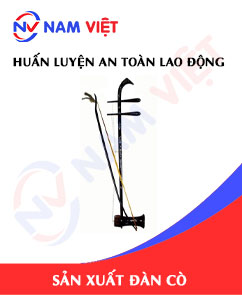
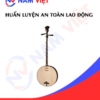
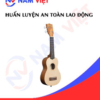



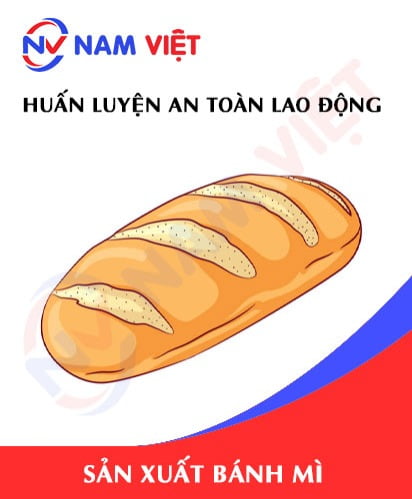
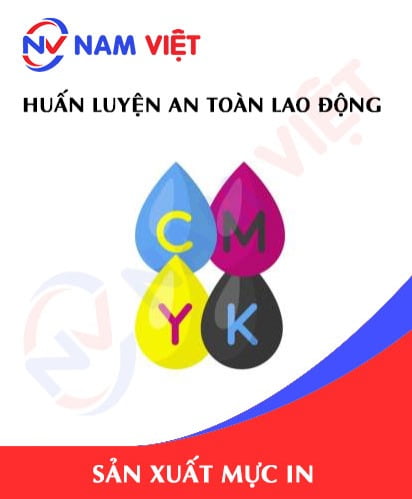
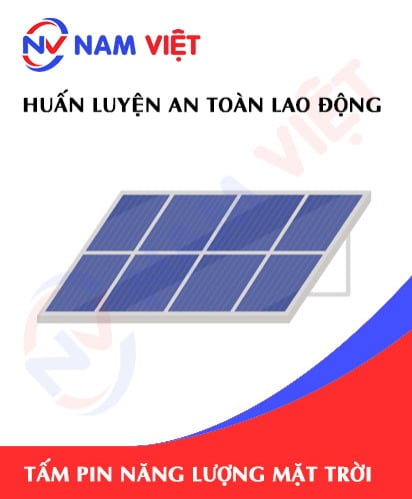
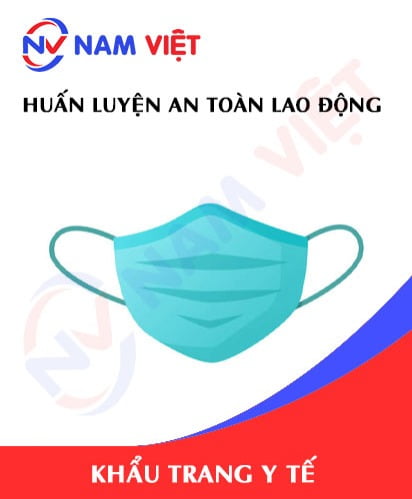

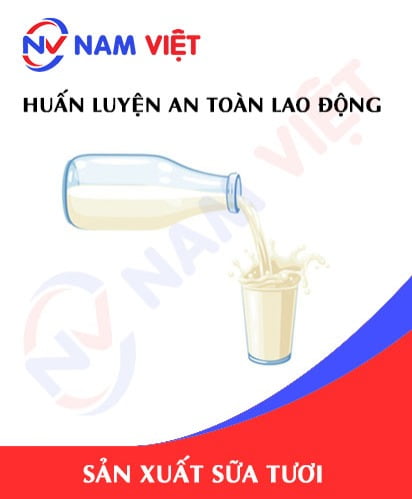

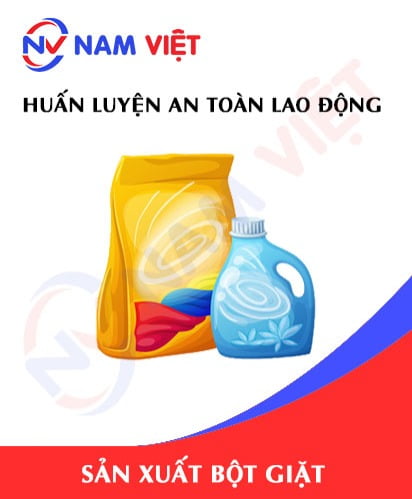
Review Occupational Safety Training for Two-String Fiddle (Erhu) Manufacturing
There are no reviews yet.